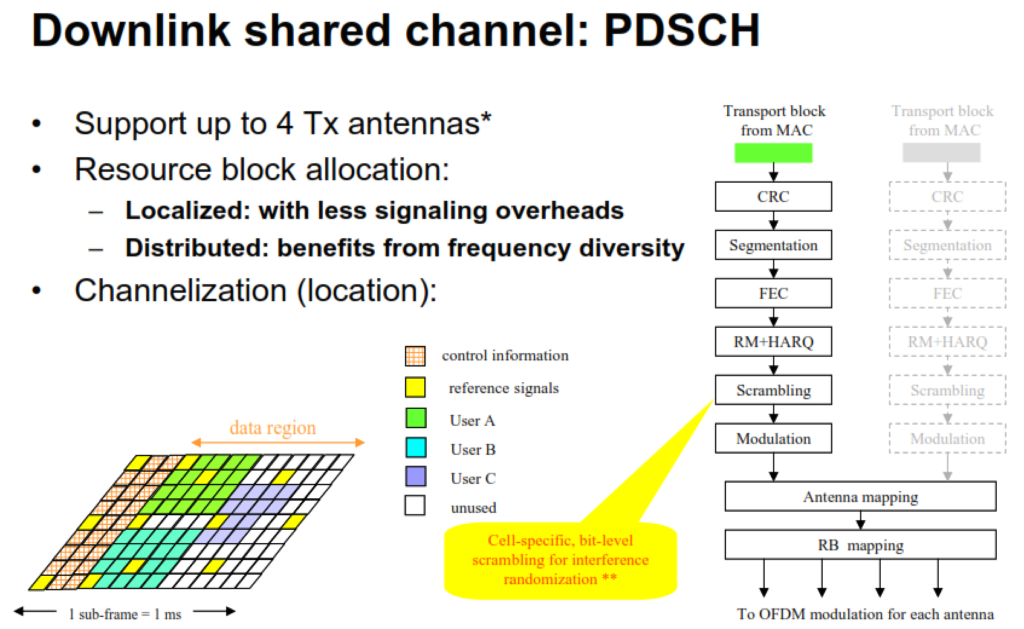The Physical Downlink Shared Channel (PDSCH) is an important channel in the LTE (Long Term Evolution) network architecture. It is the primary channel used for transmitting user data and higher-layer signaling messages from the eNodeB (base station) to the User Equipment (UE). The PDSCH is designed to support high data rates and efficient spectrum utilization, making it central to LTE’s ability to deliver high-speed data services.
Below picture represents a overview of PDSCH.

The PDSCH carries downlink data and higher link signaling. It is allocated to different UEs periodically, usually every 1 ms. PDSCH channel coding, modulation, and subcarrier allocation is dynamically controlled by the PDCCH.
Using the information provided within this article, an estimate of PDSCH throughput in terms of resource elements per frame can be derived. Table below shows the estimate for a 10 MHz bandwidth assuming 3 symbols for PDCCH and dual transmit antennas. The resulting 118,560 PDSCH REs/frame (or 11.856 MREs/sec) reflect ~30% (= 100% – 69.71%) overhead which is constituted primarily of control signaling (~19%) and reference signaling (~9.5%).

Note: In the table, symbols refers to REs, frequency blocks refers to RBs, and scheduled resource blocks refers to RB pairs.
The spreadsheet that was used to derive these values was careful not to double-count the overlap between reference signals and any other channels. Note also that an additional ~0.5% overhead was discounted due to a simplified scheduler implementation which left REs unused within the center RBs used for the PBCH and PSS/SSS (identified as “Unused PDSCH” in Figure 50). The total percent overhead is most sensitive to the number of symbols allocated for the PDCCH. The example below would change by ~7% for each 1 symbol decrement (~23% for PCFICH = 2 and ~16% for PCFICH =1).
A spreadsheet (LTEBasicTput.xls) employing these calculations can be found at http://compass.mot.com/go/lteplan in the LTE RF Panning Guide folder. Table below shows the percent of the frame to be allocated for the PDSCH for varying assumptions of PCFICH and bandwidth. The table assumes 2 transmit antennas and the results would be shifted downward by ~2% for 4 transmit antennas.
